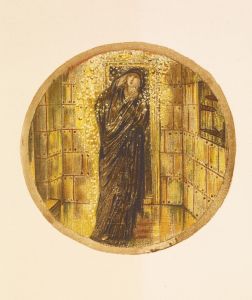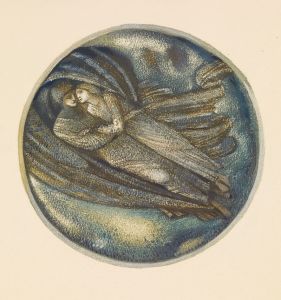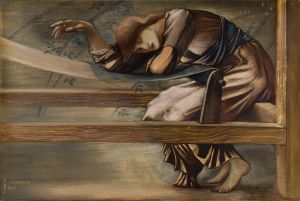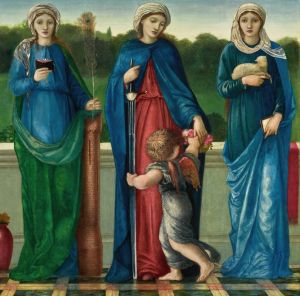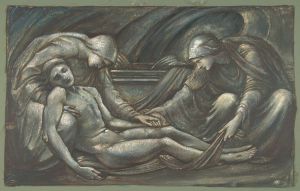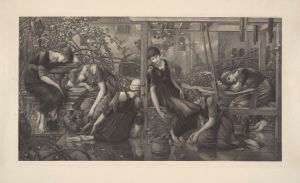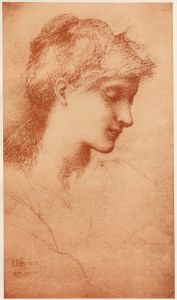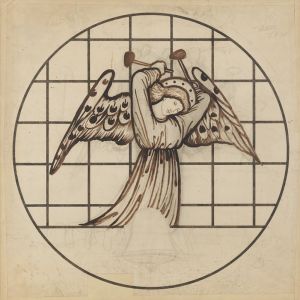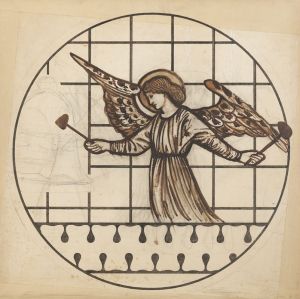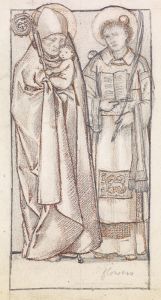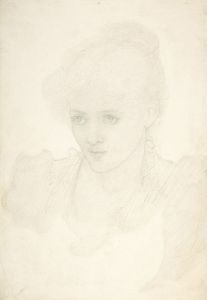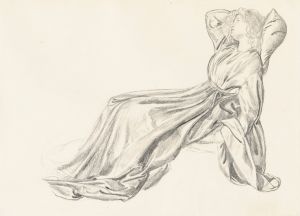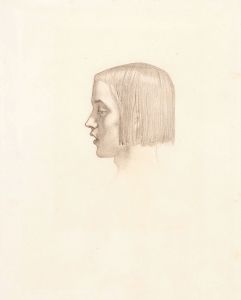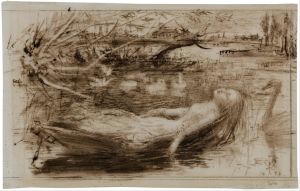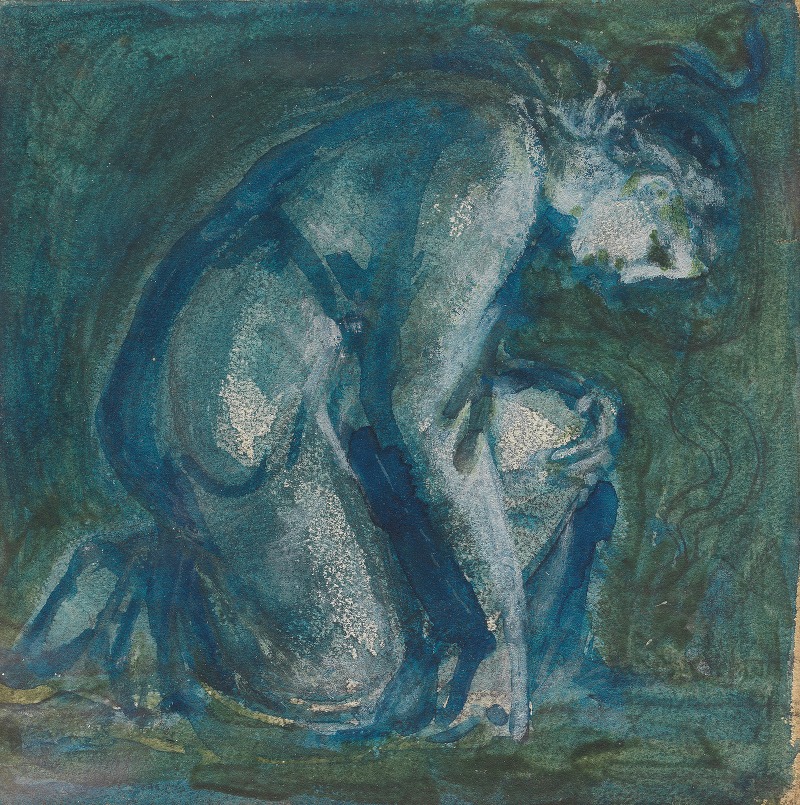
A kneeling figure
A hand-painted replica of Sir Edward Coley Burne-Jones’s masterpiece A kneeling figure, meticulously crafted by professional artists to capture the true essence of the original. Each piece is created with museum-quality canvas and rare mineral pigments, carefully painted by experienced artists with delicate brushstrokes and rich, layered colors to perfectly recreate the texture of the original artwork. Unlike machine-printed reproductions, this hand-painted version brings the painting to life, infused with the artist’s emotions and skill in every stroke. Whether for personal collection or home decoration, it instantly elevates the artistic atmosphere of any space.
Sir Edward Coley Burne-Jones (1833–1898) was a prominent British artist and designer associated with the Pre-Raphaelite Brotherhood and the later Arts and Crafts Movement. His works are known for their romantic and dreamlike qualities, often drawing inspiration from mythology, literature, and medieval themes. Among his extensive body of work is A Kneeling Figure, a painting that exemplifies his characteristic style and attention to detail.
A Kneeling Figure is a study or depiction of a single figure in a kneeling pose, rendered with Burne-Jones's signature delicacy and grace. The artwork reflects his fascination with the human form and his ability to convey emotion and narrative through posture and expression. The figure, often interpreted as female, is depicted with flowing drapery, a hallmark of Burne-Jones's aesthetic, which was heavily influenced by classical art and the Italian Renaissance. The subdued color palette and soft, ethereal quality of the painting are consistent with his broader oeuvre.
The exact context or purpose of A Kneeling Figure is not definitively documented. It may have been a preparatory study for a larger composition or a standalone piece intended to explore the theme of devotion, humility, or introspection. Burne-Jones frequently created studies of individual figures as part of his creative process, which were later incorporated into his larger works, such as altarpieces, murals, or narrative paintings.
Burne-Jones's art was deeply intertwined with the ideals of the Pre-Raphaelite movement, which sought to reject the mechanistic approach to art and culture that had emerged during the Industrial Revolution. Instead, the movement emphasized a return to the detailed, vibrant, and symbolic art of the period before Raphael. A Kneeling Figure embodies these principles through its meticulous execution and its focus on timeless, universal themes.
The painting is an example of Burne-Jones's ability to merge technical skill with poetic imagination. His works often evoke a sense of otherworldliness, and A Kneeling Figure is no exception. The figure's pose and expression invite viewers to contemplate themes of spirituality, reverence, or personal reflection, though the specific narrative remains open to interpretation.
As with many of Burne-Jones's works, A Kneeling Figure demonstrates his collaboration with other artists and craftsmen of his time, particularly those associated with the Arts and Crafts Movement. This movement, which Burne-Jones helped to shape, emphasized the integration of fine art and decorative art, as well as the importance of craftsmanship and design.
The current location of A Kneeling Figure is not widely documented, and further details about its provenance or exhibition history are limited. However, Burne-Jones's works are held in numerous public and private collections worldwide, including major institutions such as the Tate Britain and the Birmingham Museum and Art Gallery, which house some of his most celebrated pieces.
In summary, A Kneeling Figure by Sir Edward Coley Burne-Jones is a testament to the artist's mastery of form, his commitment to the ideals of the Pre-Raphaelite Brotherhood, and his enduring influence on the art world. While specific details about the painting remain scarce, its artistic qualities and thematic resonance continue to captivate audiences.





